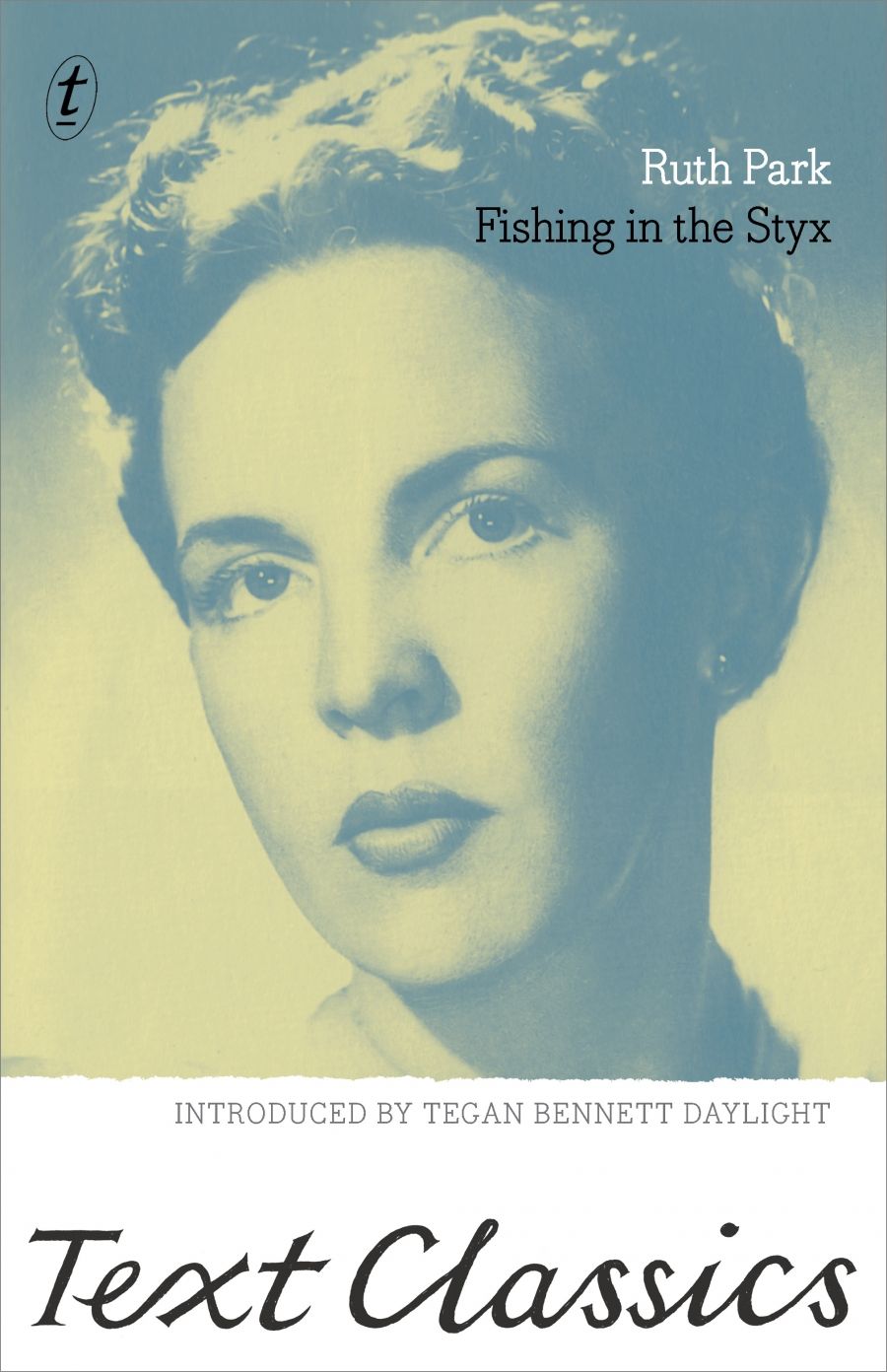
- Free Article: No
- Contents Category: Biography
- Review Article: Yes
- Online Only: No
- Custom Highlight Text:
I discovered Ruth Park’s Companion Guide to Sydney in a Sydney second-hand bookshop in 1980. Published in 1973, it was already out of print, probably because it evokes a Sydney that no longer existed. In the early 1970s, Park writes, ‘Sydney was beginning to pull itself to pieces, the air was full of fearful noise, the sky of dust … And the terrible sound of the rock pick tirelessly pecking away at Sydney’s sandstone foundations was over all.’
- Book 1 Title: Fishing in the Styx
- Book 1 Biblio: Viking, $29.95 hb
In the postwar years, Ruth Park and her husband, D’Arcy Niland, were promising young radio writers who could not afford a radio of their own. In those times, there were no literary agents to stand up for ruthlessly exploited writers. And women’s rights were not exactly a topical issue. D’Arcy took over the household’s one desk; Ruth made do with the kitchen table or ironing board. Young women in maternity wards were addressed as ‘mother’ even before they gave birth. ‘Stop screeching. It had to come out the way it went in,’ Ruth Park heard a nurse say to a woman in the last stages of labour.
In 1963 Betty Friedan would analyse ‘the problem that has no name’ in The Feminine Mystique. But these were the 1950s. With five young children, Ruth Park maintained a prolific literary output between feeds, nappy changes, and grabs of sleep, and occasionally experienced utter despair. ‘It was impossible to put into words my unstructured discontent, my feeling that I was not only in a trap with no way out, but that I didn’t know why I felt I was in a trap,’ she writes. When she complained, her husband said, ‘But I thought you a warrior woman. Aren’t you?’
D’Arcy and Ruth ‘set off sparks in each other’. It was clearly a happy and tender marriage –though there were things that were never discussed, and D’Arcy Niland, though he was truly proud of his wife, never read any of her novels.
The shadow of D’Arcy Niland’s death hangs over the narrative from the beginning. Ruth Park, newly married at twenty-two, would press her pregnant belly against her husband in their cramped single bed and marvel at this new person in her life. ‘I liked to put my hand on his heart and feel the steady regular beat, so different from the nervous skitter of my own. It never occurred to me that one day that heart would come to a stop.’
Park found the deaths of her father and husband almost impossible to bear. Stoicism did not help her in the mourning time. Friends, admiring her apparent calm, told her she was being wonderful. ‘To be wonderful is to handle grief badly. And so I nearly died.’
Much later, Park found solace in Zen Buddhism and what turned out to be a ten-year retreat to Norfolk Island. But the years after D’Arcy Niland’s death are treated hurriedly. It is her marriage to D’Arcy Niland that Ruth Park wants to remember here – their busy writing careers crammed with successes that never lifted them out of poverty, and the bringing-up of their children.
The sequel is even more absorbing than A Fence Around the Cuckoo, in which Ruth Park describes her childhood in New Zealand, her convent schooling and (at the prompting of one of the nuns) the beginning of a penfriendship with the young Australian writer, D’Arcy Niland. The autobiography is written like a novel: full of dramatic anecdotes about characters, colloquial dialogue, and the humour and sentimentality characteristic of Ruth Park.
It is painful to read about the way writers were exploited at the time. And Ruth Park is one more writer to tell a bitter story about the publishing house, Angus and Robertson.
For both writers and women this autobiography has a didactic undertone: ‘Have the best agent possible … Do not trust a solicitor’s advice on the contract … If possible get an upfront payment, as much as possible, and run for your life.’ Women need to be always on their guard against sexist laws, institutions and the behaviour of those they most love.
Her rule of life is an ancient Māori proverb: He who climbs a cliff may die on the cliff. So what? Ruth Park is far more passionate than this implies. Try as she might, she has never learnt detachment or indifference. The story of her life, told without a trace of self-pity, is moving and illuminating.


Comments powered by CComment